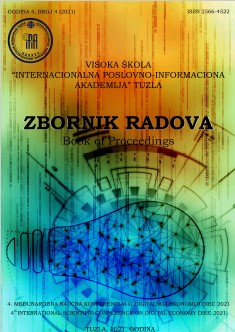GOOGLE SEARCH ANALYSIS IN INTERDISCIPLINARY RESEARCH (CASE STUDIES: COVID-19, BIRTH RATE AND TOURISM DEMAND)
GOOGLE SEARCH ANALYSIS IN INTERDISCIPLINARY RESEARCH (CASE STUDIES: COVID-19, BIRTH RATE AND TOURISM DEMAND)
Author(s): Tado JurićSubject(s): Methodology and research technology, Health and medicine and law, Demography and human biology, Tourism, ICT Information and Communications Technologies
Published by: Internacionalna poslovno – informaciona akademija
Keywords: COVID-19; Google; Google Trends; Croatia; pandemic spread forecast; tourist season; forecasting; the birth rate;
Summary/Abstract: The analysis of data obtained through Google search is gaining in importance in numerous social sciences. This paper will show that this approach can be very useful in public health, demography and forecasting tourist demand in Croatia. The need for such non-standard modelling approaches is necessary on the one hand due to the delay of official data and on the other hand, because there is great uncertainty regarding future trends. We present the first studies of this type in South-eastern Europe. We have also developed a new approach and method by which data obtained through Google Trends (GT) can be standardized for comparison with official databases. Despite the many advantages of this approach, we consider the specifics and limitations of such data systems and warn in which cases the validity of interpretations and conclusions may be jeopardized. In the first case study, we present the results of testing a method on the example of the Republic of Croatia that allows the detection and prediction of new cases of COVID 19 at an early stage. The main benefit of the proposed approach is reflected in the timely detection of new locations and hotspots of the pandemic. Such detection can redirect public health resources promptly and act preventively in the further spread of the infection, for example by introducing additional measures in a certain area. This method can also be used in demography for forecasting the birth rate. Using the method, we correctly predicted that in 2021 there will be between 12 and 14% fewer births in Croatia compared to previous years, ie 31,000 to 32,000, instead of the expected 36,000 - 37,000. In the third case study, we show that the use of GT for forecasting tourist demand is a useful method both at the state level and at the level of individual regions and cities in Croatia. Our results showed, and the official five months later confirmed, the recovery of Croatian tourism at the level of 15% better attendance than the previous season (2020).
Journal: Zbornik radova Međunarodne naučne konferencije o digitalnoj ekonomiji DIEC
- Issue Year: 4/2021
- Issue No: 4
- Page Range: 7-26
- Page Count: 20
- Language: English

